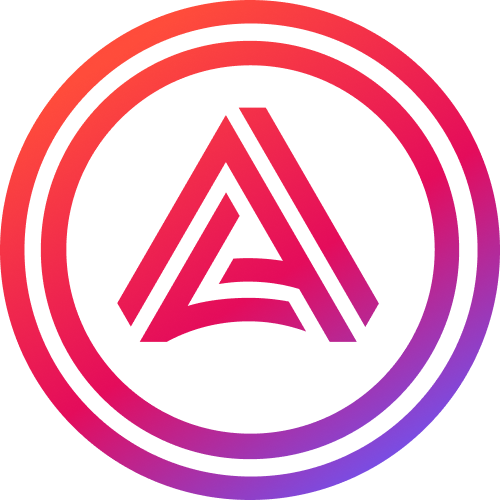
Acala Token priceACA
ACA/USD price calculator
Acala Token market Info
Live Acala Token price today in USD
Do you think the price of Acala Token will rise or fall today?
Now that you know the price of Acala Token today, here's what else you can explore:
How to buy Acala Token (ACA)?How to sell Acala Token (ACA)?What is Acala Token (ACA)What would have happened if you had bought Acala Token (ACA)?What is the Acala Token (ACA) price prediction for this year, 2030, and 2050?Where can I download Acala Token (ACA) historical price data?What are the prices of similar cryptocurrencies today?Want to get cryptocurrencies instantly?
Buy cryptocurrencies directly with a credit card.Trade various cryptocurrencies on the spot platform for arbitrage.Acala Token price prediction
When is a good time to buy ACA? Should I buy or sell ACA now?
What will the price of ACA be in 2026?
In 2026, based on a +5% annual growth rate forecast, the price of Acala Token(ACA) is expected to reach $0.01083; based on the predicted price for this year, the cumulative return on investment of investing and holding Acala Token until the end of 2026 will reach +5%. For more details, check out the Acala Token price predictions for 2025, 2026, 2030-2050.What will the price of ACA be in 2030?
About Acala Token (ACA)
What Is Acala?
Acala is a cross-chain DeFi network and liquidity hub within the Polkadot ecosystem. Designed as a decentralized finance powerhouse, Acala stands out as a multi-functional platform, offering a range of financial services and applications. Acala's infrastructure includes a stablecoin network, a decentralized exchange (DEX), and a liquidity staking protocol, making it a comprehensive solution for DeFi on Polkadot.
The platform is not only a parachain on Polkadot but also serves as an application layer, providing a suite of financial products. These include a decentralized exchange, staking liquidity through Liquid DOT (LDOT), and an algorithmic stablecoin, aUSD. Acala's unique position allows it to facilitate seamless value transfers across various blockchains connected by Polkadot, enhancing the overall efficiency and utility of the DeFi ecosystem.
Resources
Official Documents: https://wiki.acala.network/
Official Website: https://acala.network/
How Does Acala Work?
Acala operates by leveraging the advanced capabilities of the Polkadot network, particularly its parachain model. Parachains are individual blockchains that run in parallel within the Polkadot ecosystem, each with its own specific features and use cases. Acala, as a parachain, benefits from Polkadot's shared security and interoperability features, enabling it to offer robust and versatile DeFi services.
One of the key components of Acala is its decentralized exchange (DEX), which operates on an automated market maker (AMM) model. This DEX allows users to trade various assets, including Polkadot's native token (DOT), Acala's own ACA token, and other cross-chain assets. Furthermore, Acala's DEX supports the staking of DOT tokens for LDOT, which can be used for various purposes like investment, lending, or as collateral for the Acala Dollar (aUSD).
Acala's stablecoin network is another critical aspect of its functionality. The Acala Dollar (aUSD) is a decentralized, algorithmic stablecoin native to the Polkadot network. It plays a vital role in maintaining price stability and providing a reliable medium of exchange within the DeFi ecosystem. Users can mint aUSD by collateralizing assets, and it can be used across various DeFi applications, enhancing liquidity and facilitating smooth financial operations.
What Is ACA Token?
ACA is the native utility token of the Acala network. It has a max supply of 1,600,000,000 tokens. This token serves multiple purposes within the ecosystem, including paying transaction fees, participating in governance, and acting as a contingency solution for sudden price drops in collateral assets. ACA token holders have the power to vote on network upgrades and decisions, playing a crucial role in the decentralized governance of Acala.
Transaction fees on the Acala network can be paid using ACA, as well as a variety of other tokens, thanks to Acala's flexible fee structure. This flexibility is part of Acala's broader strategy to make DeFi more accessible and user-friendly, reducing the barriers to entry for users and developers alike. The ACA token thus not only facilitates the smooth operation of the network but also empowers its users to shape its future.
What Determines Acala’s Price?
The price of Acala token (ACA), like any cryptocurrency, is influenced by a complex interplay of various factors, pivotal in the volatile and dynamic world of blockchain and digital assets. One of the primary determinants is market demand and supply, a fundamental economic principle that applies to cryptocurrencies as well. Demand for ACA is driven by its utility within the Acala network, particularly its role in transaction fees, governance, and as a stability mechanism for its collateral assets. As Acala's DeFi services, such as its DEX, stablecoin network, and liquidity staking protocols, gain traction within the Polkadot ecosystem, the demand for ACA naturally increases, potentially driving up its price. Conversely, an oversupply or reduced demand can lead to a price decrease.
Another significant factor influencing Acala's price is the overall performance and adoption rate of the Polkadot network. Given that Acala is a key parachain within Polkadot, developments, upgrades, and the general health of the Polkadot ecosystem can have a direct impact on ACA's value. Investor sentiment towards Polkadot, driven by its scalability, interoperability, and security features, can reflect in the demand for ACA. Additionally, broader market trends in the cryptocurrency sector, including regulatory changes, technological advancements, and shifts in investor sentiment, play a crucial role. For instance, a bullish trend in the DeFi sector or positive regulatory news can lead to increased interest in DeFi tokens like ACA, impacting its price.
For those interested in investing or trading Acala token, one might wonder: Where to buy ACA? You can purchase ACA on leading exchanges, such as Bitget, which offers a secure and user-friendly platform for cryptocurrency enthusiasts.
Bitget Insights


ACA/USD price calculator
ACA resources
What can you do with cryptos like Acala Token (ACA)?
Deposit easily and withdraw quicklyBuy to grow, sell to profitTrade spot for arbitrageTrade futures for high risk and high returnEarn passive income with stable interest ratesTransfer assets with your Web3 walletWhat is Acala Token and how does Acala Token work?
Global Acala Token prices
Buy more
FAQ
What is the current price of Acala Token?
What is the 24 hour trading volume of Acala Token?
What is the all-time high of Acala Token?
Can I buy Acala Token on Bitget?
Can I get a steady income from investing in Acala Token?
Where can I buy Acala Token with the lowest fee?
Related cryptocurrency prices
Prices of newly listed coins on Bitget
Hot promotions
Where can I buy Acala Token (ACA)?
Video section — quick verification, quick trading









